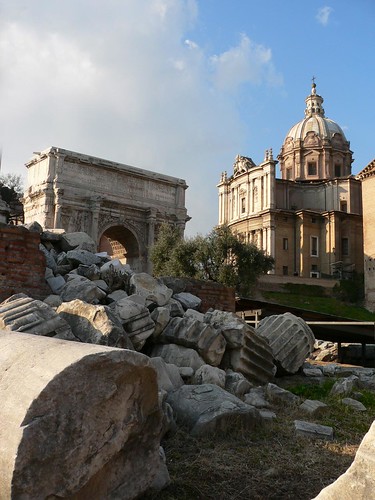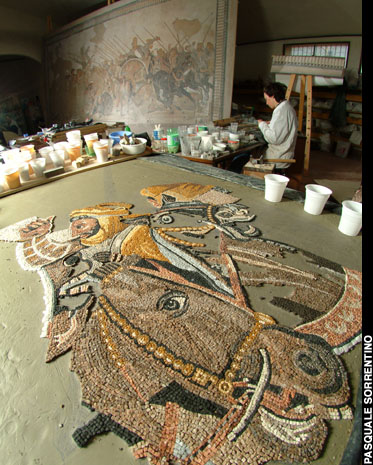
Unearthing history in the heart of ancient Rome. by Derek Wilson. Wanted in Rome: A cremation tomb that has been identified as going back to the 11th or 10th century BC, long before Romulus and Remus appeared on the scene has been uncovered in the Roman forum.
"Looking down into the forums from Via dei Fori Imperiali on the way to Piazza Venezia, the well-tomb, a perfectly circular hole in the ground, lies just to the right of the senate house in the Forum of Caesar. This forum was the first to be built, carved out of a former saddle between the Quirinale and Capitoline hills in 46 BC, and is thus on top of the tomb, which is suspected to be the first trace of a whole yet undiscovered ancient necropolis in the area.
Speaking to reporters, a jubilant Eugenio La Rocca, head of the Rome council?s cultural heritage department, dated the tomb to somewhere between the Bronze Age and the early Iron Age. ?It was a real surprise to find rich furnishings inside it,? he exclaimed. The findings included a funeral urn and eight hand-worked, patterned vases in terracotta. They contained tiny bronze miniatures of weapons, and elsewhere what seemed t o be the bones of a bird, placed there, La Rocca presumed, to accompany the deceased on his journey to the beyond, as was the custom. The riches were found after first rolling back the tomb?s cover, a weighty round slab of tufa, and then removing its seal, a container in the stylised shape of a hut, a model akin to real huts found much later on the Palatine Hill.
La Rocca and the director of the dig, Roberto Meneghini, both deduced that such a rich tomb must have been that of the head of a clan, a patriarch ruling over one of the scattered groups of families, or settlements, that had gathered around a fording point on the Tiber when the future Rome was still only a wild place of heavily wooded, isolated hills interspersed by tricky marshes."

